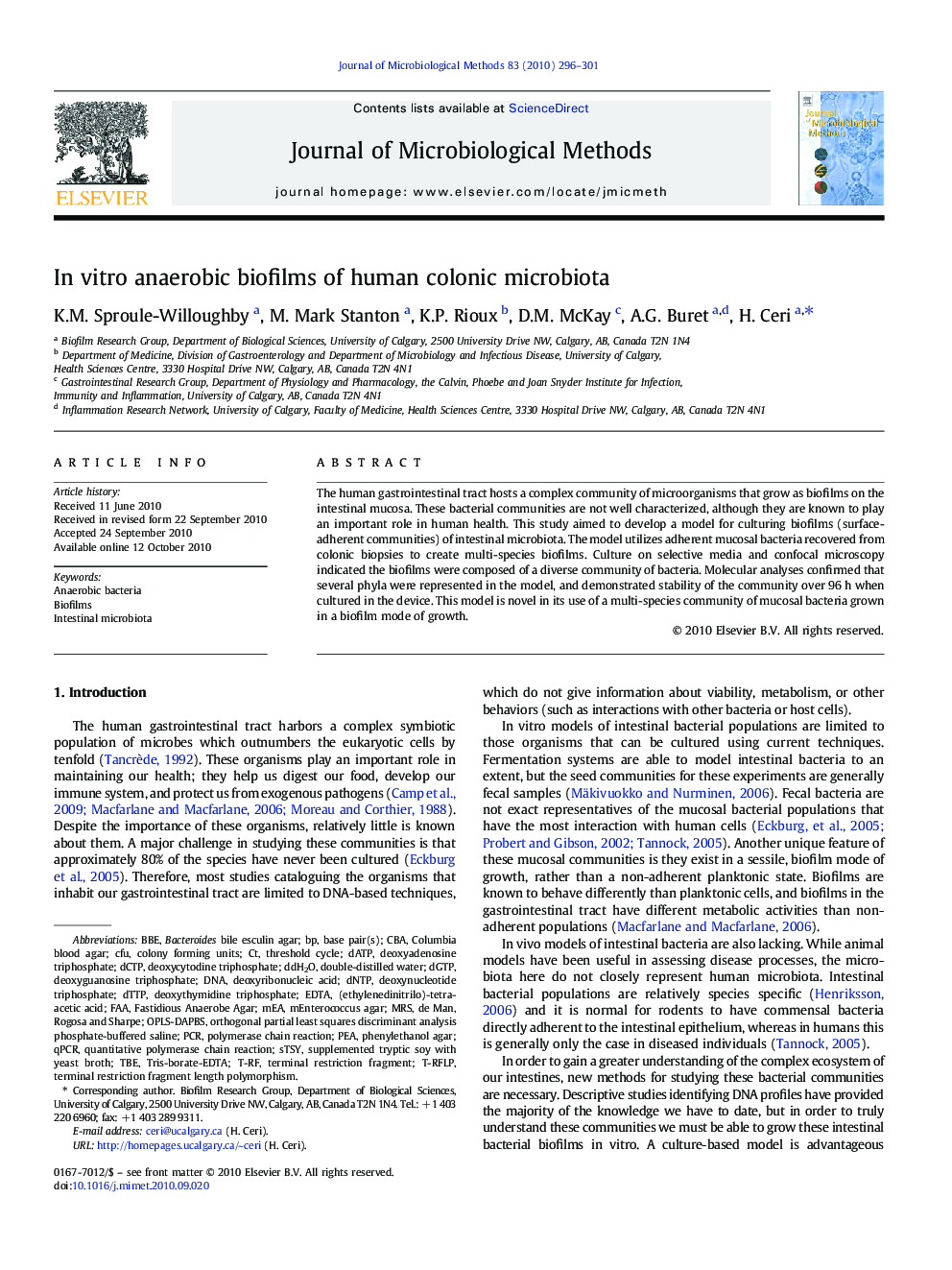| Article ID | Journal | Published Year | Pages | File Type |
|---|---|---|---|---|
| 10889842 | Journal of Microbiological Methods | 2010 | 6 Pages |
Abstract
The human gastrointestinal tract hosts a complex community of microorganisms that grow as biofilms on the intestinal mucosa. These bacterial communities are not well characterized, although they are known to play an important role in human health. This study aimed to develop a model for culturing biofilms (surface-adherent communities) of intestinal microbiota. The model utilizes adherent mucosal bacteria recovered from colonic biopsies to create multi-species biofilms. Culture on selective media and confocal microscopy indicated the biofilms were composed of a diverse community of bacteria. Molecular analyses confirmed that several phyla were represented in the model, and demonstrated stability of the community over 96Â h when cultured in the device. This model is novel in its use of a multi-species community of mucosal bacteria grown in a biofilm mode of growth.
Keywords
dNTP(ethylenedinitrilo)-tetraacetic acidBBEdGTPdCTPdATPddH2ODTTPFAATBECBAMRSMEACFUqPCRT-RFLPPEADNAdouble-distilled waterEDTAdeoxyribonucleic acidAnaerobic bacteriaBiofilmsTris-Borate-EDTABase pair(s)de Man, Rogosa and Sharpedeoxyadenosine triphosphatedeoxyguanosine triphosphatedeoxythymidine triphosphatedeoxynucleotide triphosphateterminal restriction fragment length polymorphismterminal restriction fragmentIntestinal microbiotacolony forming unitspolymerase chain reactionquantitative polymerase chain reactionPCRthreshold cycle
Related Topics
Life Sciences
Biochemistry, Genetics and Molecular Biology
Biotechnology
Authors
K.M. Sproule-Willoughby, M. Mark Stanton, K.P. Rioux, D.M. McKay, A.G. Buret, H. Ceri,
